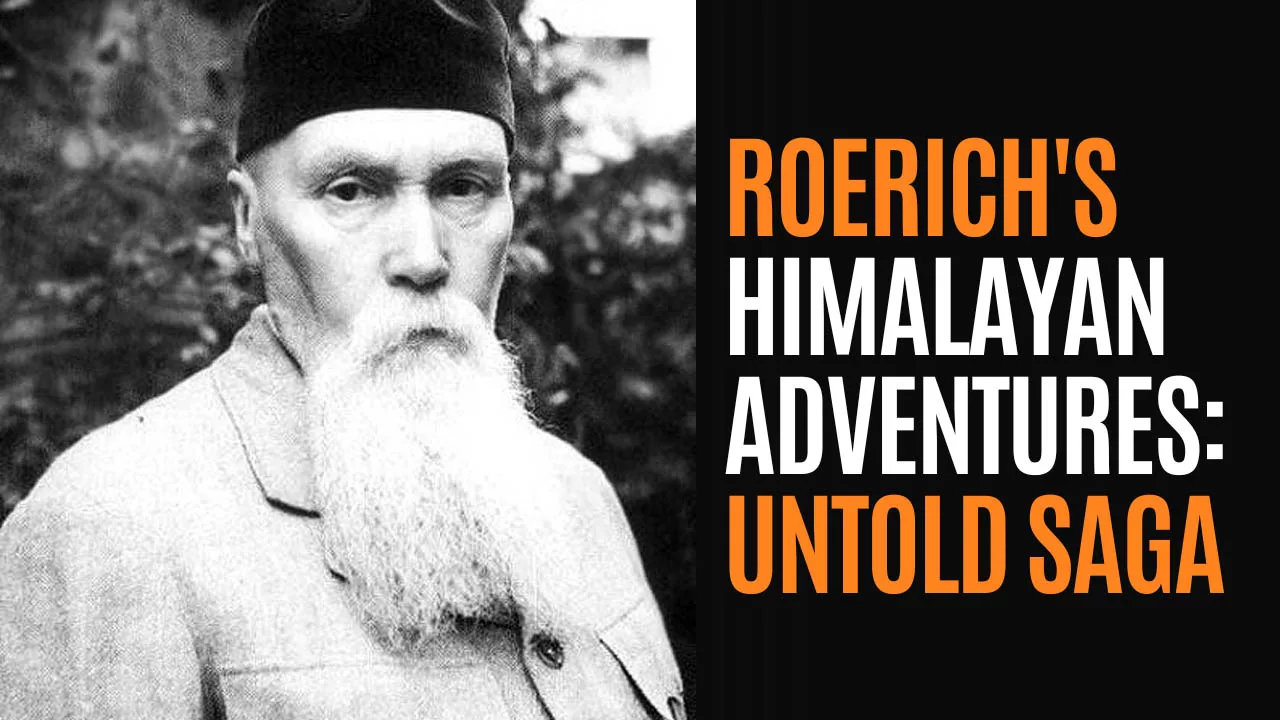Hadimba Temple: Hidden Secrets Exposed
Blogs
Introduction:
Nestled in the picturesque landscapes of Manali, amidst the towering Himalayas, Hadimba Temple stands as a testament to both architectural splendor and profound mythological significance. With roots embedded in Hindu mythology, this sacred sanctuary has evolved over the centuries, attracting pilgrims and tourists alike.
Who is Hadimba Devi:
Hadimba Devi, also known as Hidimbi Devi, is a character from Hindu mythology, specifically from the great Indian epic, the Mahabharata. She is a powerful and benevolent goddess worshipped primarily in the state of Himachal Pradesh, India, where the Hadimba Devi Temple dedicated to her is located in Manali.
According to the Mahabharata, Hadimba was a Rakshasi (demoness) and the sister of Hidimba, a Rakshasa. Hidimba fell in love with Bhima, one of the Pandava brothers, during the Pandavas’ exile in the forests. Hadimba assisted Bhima in various ways, and together, they had a son named Ghatotkacha.

Hadimba Devi earned reverence for her unwavering devotion, selflessness, and protective nature. Despite her demonic origins, artists portrayed her as benevolent and compassionate. After the Mahabharata War, Hadimba returned to the spiritual realm, but the continued sense of her divine presence prompted the construction of the Hadimba Devi Temple in her honor.
The temple serves as a significant pilgrimage site, attracting devotees seeking blessings and solace. In Hindu mythology, Hadimba Devi is considered a guardian deity and a symbol of divine femininity. The legends surrounding her highlight themes of love, sacrifice, and the transcendence of societal norms for the sake of righteousness.
Brief History of Hadimba Temple:
Dating back to the 16th century, Hadimba Devi Temple was built by Raja Bahadur Singh as a tribute to Hadimba, the wife of Bhima from the epic Mahabharata. The temple’s rich history is a journey through time, witnessing the passage of ages and the unfolding of countless tales.

Location of Hadimba Temple:
Perched gracefully amid Manali’s enchanting landscapes, the temple captivates visitors with its serene surroundings. The air resonates with the hymns and prayers of devotees, creating an atmosphere of tranquility. The temple’s strategic location enhances its allure, making it a spiritual beacon in the heart of Manali.
To reach Hadimba Devi Temple from the heart of Manali, follow the scenic path that winds through the charming town. Starting at the Mall Road, a central hub of activity, head towards the Old Manali Bridge. 200mt before the bridge start walking uphill road on your left, and continue along the road flanked by vibrant shops and eateries. As you meander through the bustling lanes, you’ll catch glimpses of the majestic mountains. Follow the signs leading to Hadimba Devi Temple, guiding you through the enchanting Deodar forests. The approximately 2km journey unveils stunning views of the surrounding landscape, preparing you for the spiritual and visual feast that awaits at the temple. Whether on foot or by local transport, the journey to Hadimba Devi Temple is not just a physical passage but a delightful experience that immerses you in the beauty of Manali.
Significance in Hindu Mythology:

Hadimba Devi, a powerful and benevolent goddess, is revered for her unwavering devotion and selflessness. The temple stands as a symbol of her divine presence and serves as a place of worship for those seeking solace and blessings. The mythological threads woven around Hadimba Devi bring a unique spiritual energy to this sacred site. While Navaratri is traditionally associated with the worship of Goddess Durga, the spiritual focus in Manali turns to Goddess Hidimba.
Architectural Marvel Hadimba Temple:
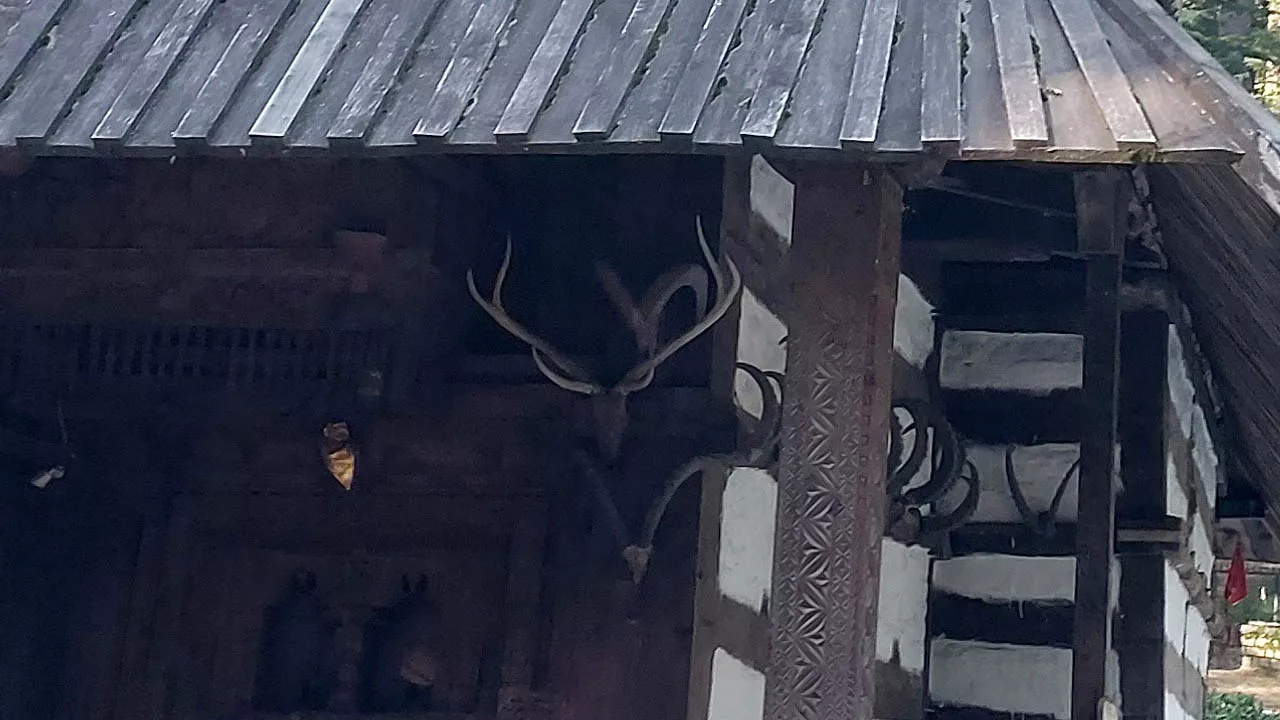
The temple’s architecture is a harmonious blend of nature and human craftsmanship. Constructed primarily from wood, it showcases intricate carvings that tell stories of ancient times. The detailed craftsmanship is a nod to the skills of the local artisans who crafted this masterpiece. The temple seamlessly integrates with the natural beauty that surrounds it, creating a visually stunning and spiritually uplifting experience.
Mythological Connection:
As the legend goes, Hadimba Devi chose the peaceful setting of Manali for her meditation, bringing with her an aura of divinity. The Mahabharata connection is palpable, and the temple serves as a reminder of the enduring tales that shape Hindu mythology. Cultural and religious practices associated with the temple continue to draw devotees seeking divine blessings.
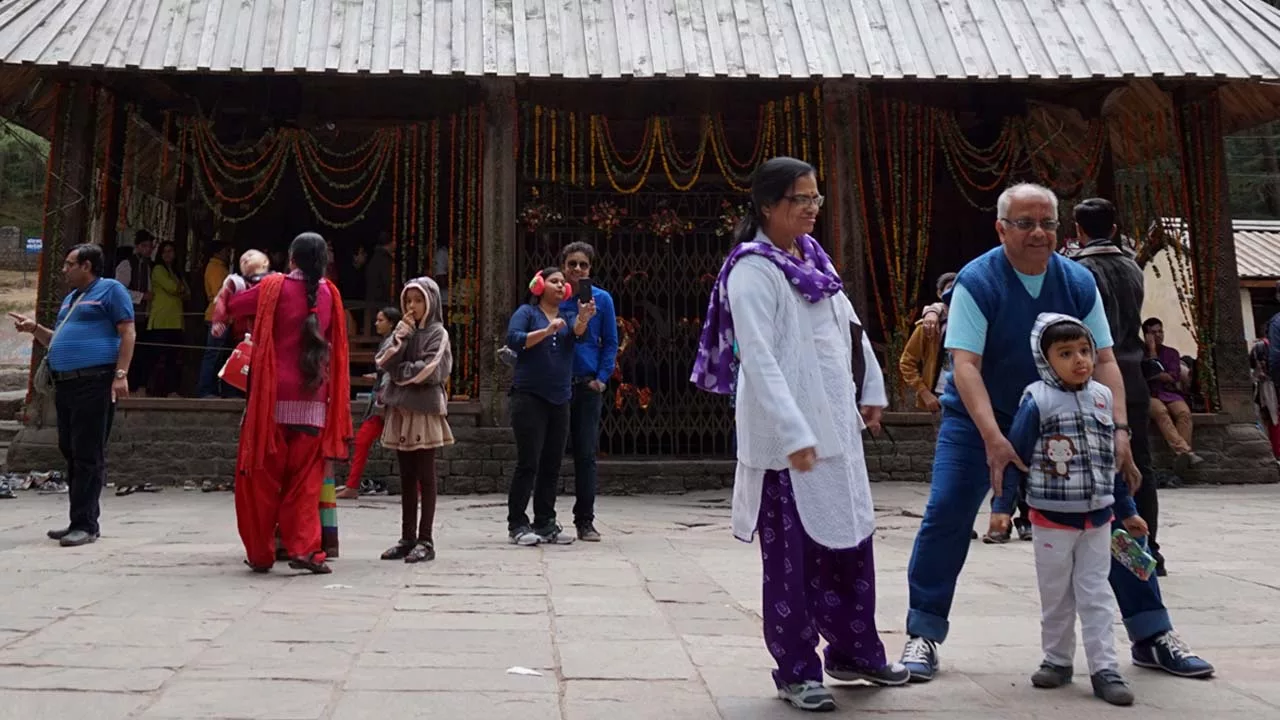
Local Traditions and Festivals:
The vibrant pulse of local traditions comes alive during festivals celebrated at Hadimba Devi Temple. The community actively participates in these events, contributing to the cultural richness of the region. These festivities not only uphold religious practices but also play a vital role in the local economy, welcoming tourists from far and wide.
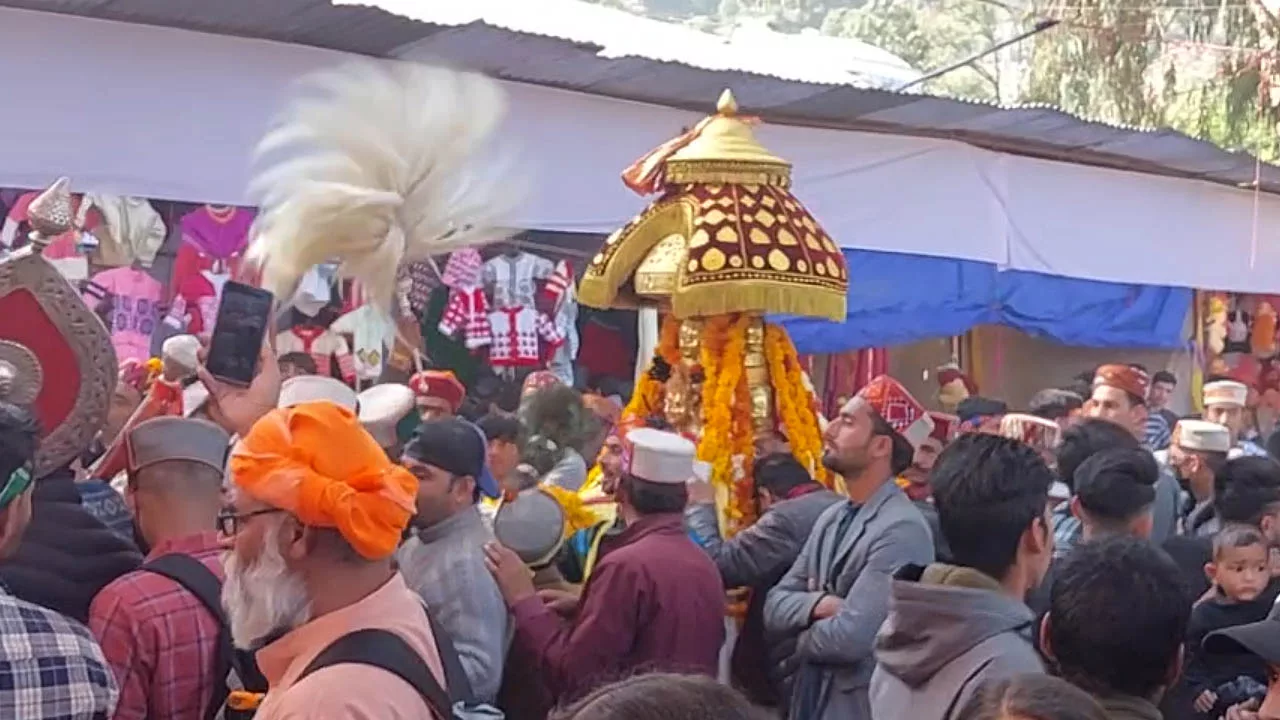
Surrounding Natural Beauty:
The temple’s location amidst the lush greenery and majestic mountains of Manali adds a layer of awe to the spiritual experience. Visitors find themselves surrounded by nature’s grandeur, creating a connection between the divine and the earthly. The natural beauty enhances the overall significance of the temple as a sacred haven.
Modern Relevance Hadimba Temple:
In contemporary society, Hadimba Devi Temple remains a beacon of cultural and religious practices. Ongoing rituals and festivals attract visitors from different corners of the globe, creating a bridge between ancient traditions and the modern world. The temple’s enduring appeal showcases its timeless relevance in the hearts of the faithful.
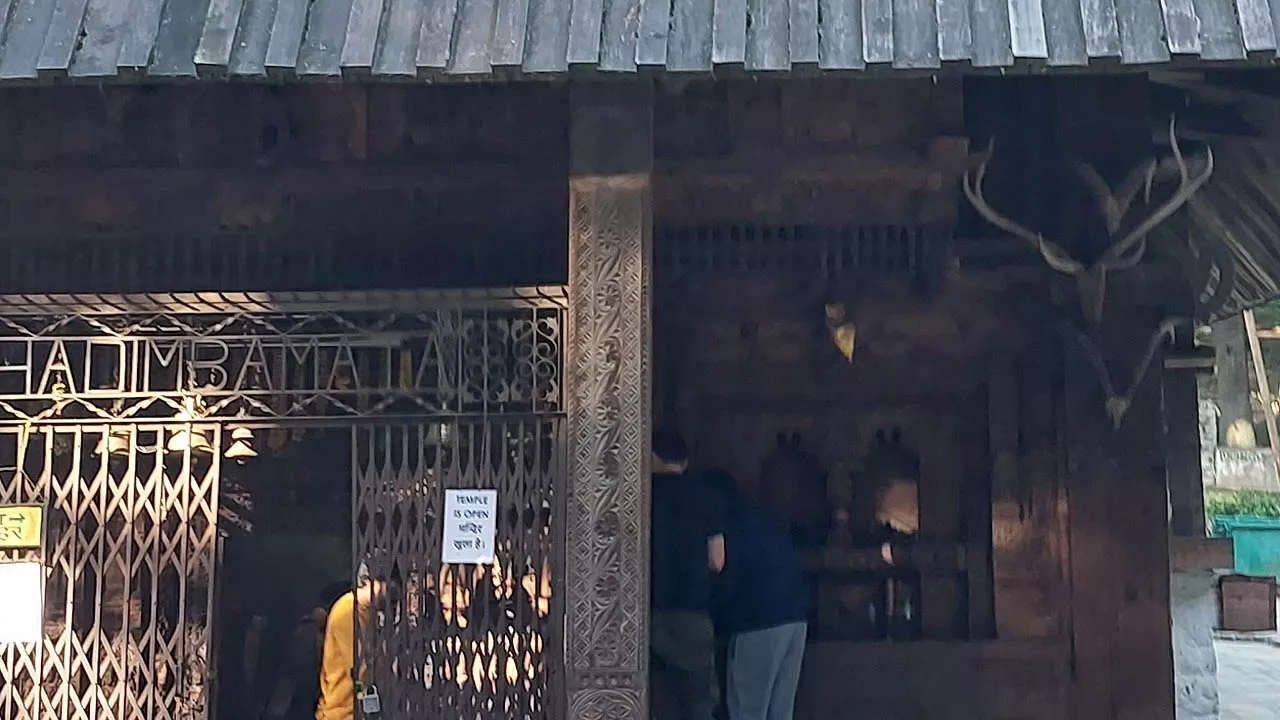
Bridging Spiritual Devotion and Psychological Inquiry:
Hadimba Devi Temple in Manali blends spiritual sanctity with psychological intrigue, offering a narrative transcending conventional boundaries. With roots in Hindu mythology, the temple’s serene surroundings and ancient legends evoke a religious aura and psychological resonance. Sigmund Freud and C.G. Jung, pioneers in psychology, would find parallels in the temple’s symbolism. Freud’s psychoanalytic theories might discern connections between Hadimba Devi’s devotion and the unconscious mind. Jung’s exploration of collective unconscious and archetypes aligns with the temple’s cultural significance, suggesting shared symbols across cultures. Hadimba Devi Temple becomes a canvas where threads of spirituality and psychology intertwine, inviting contemplation on ancient myth and modern understanding.

Conclusion:
As the sun sets behind the Himalayan Peaks of Manali, casting a golden glow on Hadimba Temple, reflection begins on its rich history, mythology, and tradition. From humble origins to modern prominence, it’s a testament to enduring devotion and the timeless charm of Manali. Hadimba Devi Temple stands as a vibrant symbol, echoing significance in the heart of the Indian Himalayas.
Recommended to You:
